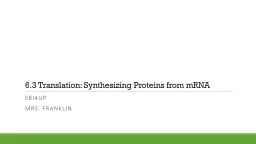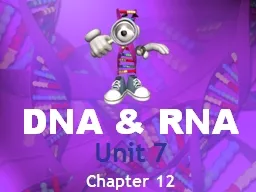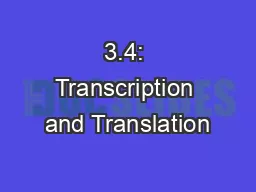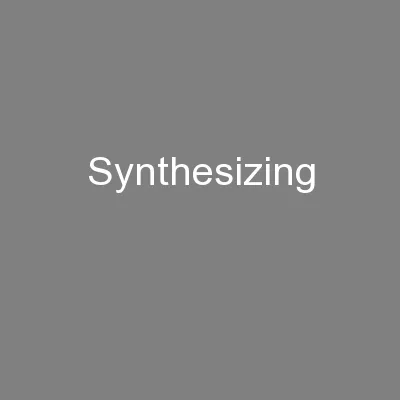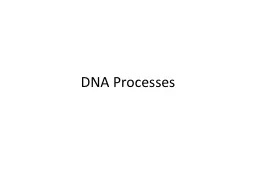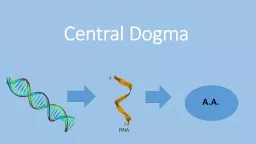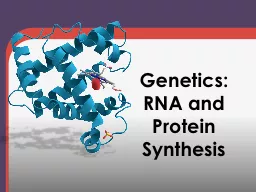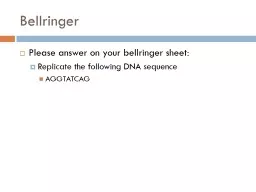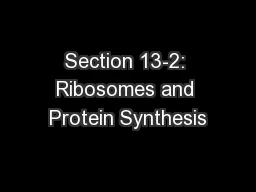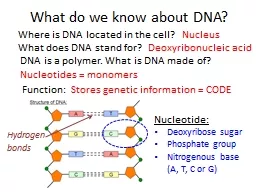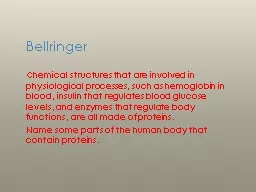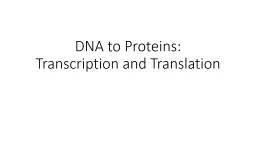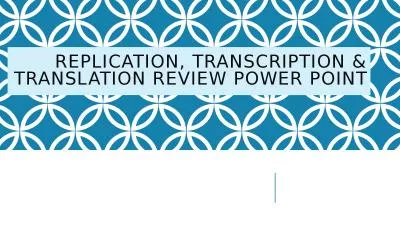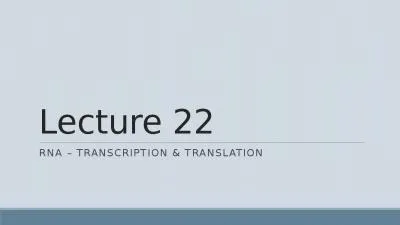PPT-6.3 Translation: Synthesizing Proteins from mRNA
Author : myesha-ticknor | Published Date : 2016-07-05
Sbi4up Mrs franklin tRNA Transfer RNA tRNA an RNA molecule that links the codons on mRNA to the corresponding amino acid for protein synthesis Each tRNA has
Presentation Embed Code
Download Presentation
Download Presentation The PPT/PDF document "6.3 Translation: Synthesizing Proteins f..." is the property of its rightful owner. Permission is granted to download and print the materials on this website for personal, non-commercial use only, and to display it on your personal computer provided you do not modify the materials and that you retain all copyright notices contained in the materials. By downloading content from our website, you accept the terms of this agreement.
6.3 Translation: Synthesizing Proteins from mRNA: Transcript
Download Rules Of Document
"6.3 Translation: Synthesizing Proteins from mRNA"The content belongs to its owner. You may download and print it for personal use, without modification, and keep all copyright notices. By downloading, you agree to these terms.
Related Documents

